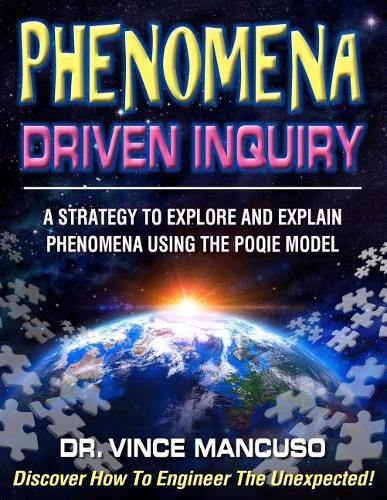Readings Newsletter
Become a Readings Member to make your shopping experience even easier.
Sign in or sign up for free!
You’re not far away from qualifying for FREE standard shipping within Australia
You’ve qualified for FREE standard shipping within Australia
The cart is loading…






Discover an amazing new strategy for your classroom. Current educational reform establishes significant emphasis on phenomena-driven learning, positioned as a central focus of educational strategy, practice, and curricular expectation. Reflecting the most current research on how we learn science, this book describes how to implement rewarding phenomena-driven investigations through the lens of an inquiry-based approach.
Part One details every facet of Phenomena-Driven Inquiry, including the philosophy and theory behind the strategy. This section also includes a thorough review of the strategy’s alignment to current education standards. It continues with a comprehensive examination of discrepant event phenomena and the power they present as a central feature of the POQIE (Predict, Observe, Question, Investigate, Explain) model. In its entirety, part one provides the foundation for you to most effectively deliver Phenomena-Driven Inquiry to your students.
Part Two is packed with an extensive array of nearly 100 exciting 3D discrepant event lessons for every grade level, involving 120 concepts from every discipline of science. Along with each detailed 3D lesson plan, you will find necessary materials, potential variables for your students to investigate, an explanation of the science concept underlying the observed phenomenon, and tips for the most rewarding student learning experience. Lessons also include variations involving presentation, resources, time, student abilities, and grade levels. In addition, alignment to the standards is explicitly provided for each 3D lesson.
This is a powerful resource for all in-service and pre-service science teachers. Learn how Phenomena-Driven Inquiry and the POQIE model can help you develop a strong inquiry-based, student-centered classroom focused on phenomena.
$9.00 standard shipping within Australia
FREE standard shipping within Australia for orders over $100.00
Express & International shipping calculated at checkout
Discover an amazing new strategy for your classroom. Current educational reform establishes significant emphasis on phenomena-driven learning, positioned as a central focus of educational strategy, practice, and curricular expectation. Reflecting the most current research on how we learn science, this book describes how to implement rewarding phenomena-driven investigations through the lens of an inquiry-based approach.
Part One details every facet of Phenomena-Driven Inquiry, including the philosophy and theory behind the strategy. This section also includes a thorough review of the strategy’s alignment to current education standards. It continues with a comprehensive examination of discrepant event phenomena and the power they present as a central feature of the POQIE (Predict, Observe, Question, Investigate, Explain) model. In its entirety, part one provides the foundation for you to most effectively deliver Phenomena-Driven Inquiry to your students.
Part Two is packed with an extensive array of nearly 100 exciting 3D discrepant event lessons for every grade level, involving 120 concepts from every discipline of science. Along with each detailed 3D lesson plan, you will find necessary materials, potential variables for your students to investigate, an explanation of the science concept underlying the observed phenomenon, and tips for the most rewarding student learning experience. Lessons also include variations involving presentation, resources, time, student abilities, and grade levels. In addition, alignment to the standards is explicitly provided for each 3D lesson.
This is a powerful resource for all in-service and pre-service science teachers. Learn how Phenomena-Driven Inquiry and the POQIE model can help you develop a strong inquiry-based, student-centered classroom focused on phenomena.